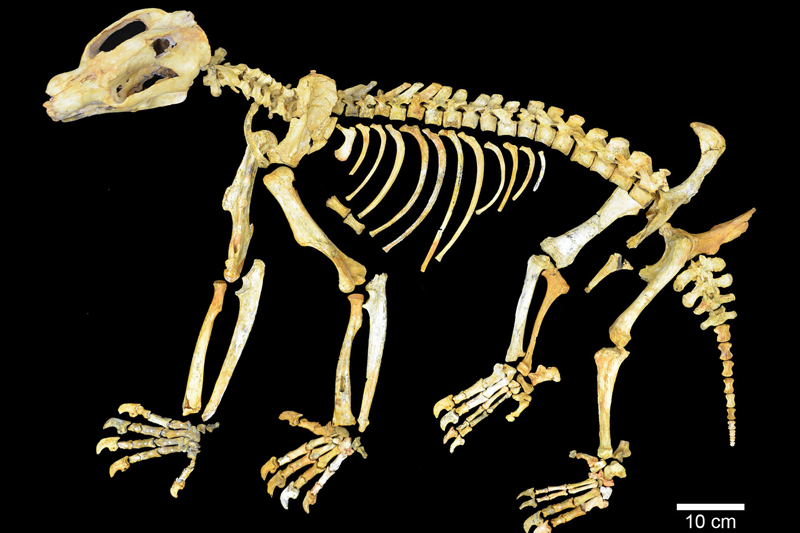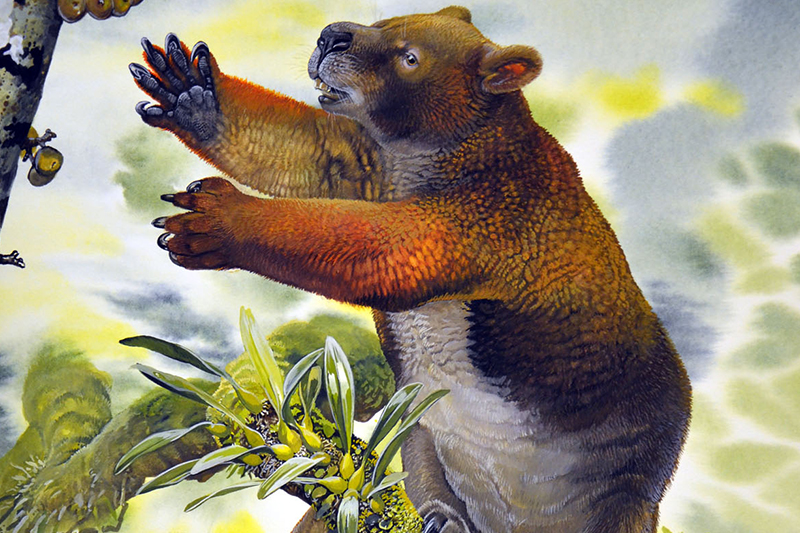Scientists unravel the growth patterns of giant wombat-like animals from ancient Australian rainforests
11 May 2023 | Story Supplied. Photos Supplied. Read time 4 min.
The University of Cape Town’s (UCT) Professor Anusuya Chinsamy-Turan is the lead author of a paper that was recently published on a 15-million-year-old giant wombat-like animal from Australia.
Fifteen million years ago, giant wombat-like animals lived in the canopy of lowland Australian rainforests. These huge herbivorous marsupials, called Nimbadon lavarackorum, weighed about 70 kg. Their articulated skeletons have been recovered from cave deposits in the world-famous Riversleigh World Heritage Area (Boodjamulla) in Waanyi country of NW Queensland. Professor Michael Archer of the University of New South Wales (UNSW), who has worked on fossils from Riversleigh for over 40 years, said: “Nimbadon lavarackorum shared these biodiverse lush forests with flesh-eating kangaroos, tree-climbing crocodiles, ancestral thylacines, cat- to leopard-sized marsupial lions, huge anaconda-like snakes, giant toothed platypuses and mysterious marsupials so strange they have been called ‘Thingodonta’. It was a very different Australia than the one we see today.”
“It is fascinating to realise that even after millions of years of fossilisation, the microscopic structure of fossil bones remains intact.”
Nimbadon lavarackorum is considered to be a tree-dwelling animal, perhaps like Sun Bears are today. Dr Karen Black, also from UNSW, said: “Nimbadon lavarackorum’s skeleton shows that it had strong arms with a very mobile shoulder and elbow joints, and its hands had specially adapted opposable thumbs, while its feet were equipped with large, koala-like curved claws.” Co-investigator, Professor Suzanne Hand, added: “Although long dead, Nimbadon’s skeletons tell us about where they once lived and the kind of movement that they were capable of, and information can be deduced about their overall size, while their teeth reveal information about their diet.” But how did they grow? Were they affected by seasonality? How long did they take to grow to adult body size in the canopies of the ancient forest? Clues to these questions lay in the microscopic structure of their bones.
A look inside fossil bones
How does one look inside the fossil bones to see their microscopic structure?
First off, one needs to select material that can be sectioned. Long bones are known to preserve a good record of growth, so the researchers chose 10 long bones of several different-sized individuals. They then removed a section from the shaft of the bone, and in some cases sampled the ends of the long bones. These samples were then embedded in resin and blocks were mounted onto glass slides. Using a diamond-edged blade, the researchers prepared thin sections from the samples. Using different size grits of grinding paper, they polished the section so thin that light could pass through. These thin sections were then studied under a petrographic microscope so that they could study the microscopic structure of their bones.

Professor Chinsamy-Turan said: “It is fascinating to realise that even after millions of years of fossilisation, the microscopic structure of fossil bones remains intact.”
The researchers found that N. lavarackorum grew in periodic spurts. It had a fast growth period followed by a slowed growth period, which was often associated with an arrest in growth. Such a cyclical pattern of growth has previously been documented for marsupials; however, the results show that N. lavarackorum had a much slower growth than that documented for the modern Western Grey Kangaroo. One individual recorded at least seven to eight growth cycles, which suggests that N. lavarackorum needed at least this amount of time (and probably more) to grow up to its adult body size. Based on the alternating fast and slow growth pattern seen in its bones, the team propose that N. lavarackorum may have been affected by seasonal environmental conditions such as pulses in food availability.
 This work is licensed under a Creative Commons Attribution-NoDerivatives 4.0 International License.
This work is licensed under a Creative Commons Attribution-NoDerivatives 4.0 International License.
Please view the republishing articles page for more information.










